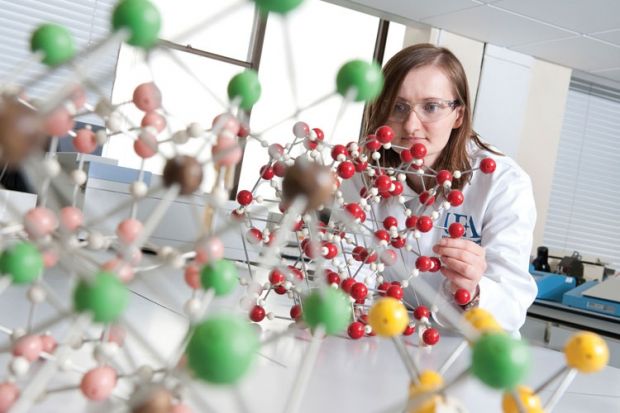Source: Alamy
Solid structure: 12-year funding for young researchers will facilitate development
Short-term contracts, incessant grant applications and a lack of independence are common complaints of researchers in the early stages of their careers – and they are issues the UK’s newest biomedical laboratory hopes to tackle.
The Francis Crick Institute – a £700 million centre in St Pancras, London opening in 2015 – promises to function in a “new and distinctive” way. The fresh approach will also make it more “family friendly”, according to the institute’s research director and current director of the Medical Research Council’s National Institute for Medical Research, Jim Smith.
The most distinctive aspect will be a career structure that gives scientists in their early “creative” years 12 years of core funding – the kind of long, stable period of support universities often find difficult to provide, Professor Smith said.
Shorter-term fellowships pose a particular problem for those who take parental leave, said Professor Smith, but “two years out of 12 is much less of a challenge to your career than two years out of five or six”.
At the Crick, time taken in maternity leave would also be added to – rather than deducted from – the contract period, so that women who take a year out could stay for 13 years. There would also be an option to split childcare leave between parents, Professor Smith added.
He said that progress in designing family-friendly policies made at the NIMR – such as ensuring that meetings are never held early in the morning or very late in the day – would carry forward when the centre merges with Cancer Research UK’s London Research Institute to establish the Crick.
“The good thing is that we can start over again. We are an independent organisation and we can do what we like,” he said.
The Crick is a partnership between the MRC, CRUK, the Wellcome Trust, University College London, Imperial College London and King’s College London. When finished, the institute will house 1,250 researchers and will have an annual operating budget of more than £100 million.
Academics’ 12 years at the centre will be split into two periods of six, roughly equating to the US “assistant” and then “associate” professor levels. These periods would be separated by a review to check that researchers are “on track”, but the review would not use publication-based metrics, said Professor Smith.
Only a tiny fraction will stay on to form a third layer of senior scientists, he added, with most leaving to take up positions elsewhere and fulfil the Crick’s remit to boost biomedicine across the country.
Register to continue
Why register?
- Registration is free and only takes a moment
- Once registered, you can read 3 articles a month
- Sign up for our newsletter
Subscribe
Or subscribe for unlimited access to:
- Unlimited access to news, views, insights & reviews
- Digital editions
- Digital access to THE’s university and college rankings analysis
Already registered or a current subscriber? Login




